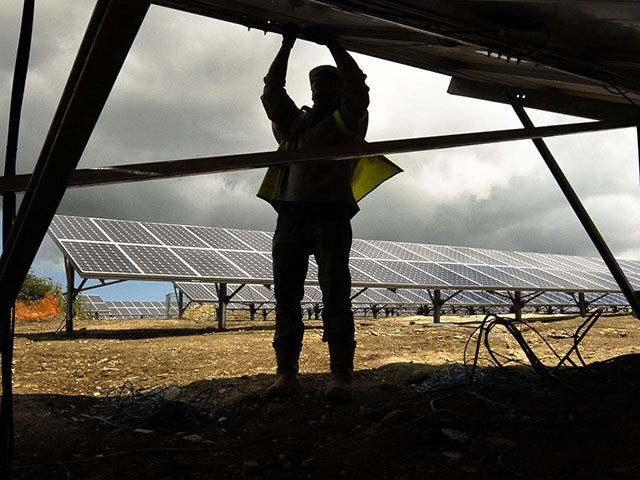
U.S. solar installations surged 43 percent in the second quarter largely because of a wave of utility-scale projects going into service to take advantage of a tax credit that was due to expire.
Developers added 2,051 megawatts in the quarter, up from 1,436 megawatts a year earlier, according to the Solar Energy Industries Association. With an additional 7.8 gigawatts under construction, more solar capacity is on pace to be connected in the second half of this year than has ever come online in a single year, the Washington-based industry group said Monday in a report produced with GTM Research.
“We’re seeing the beginning of an unprecedented wave of growth that will occur throughout the remainder of 2016,” said Cory Honeyman, GTM Research associate director of U.S. solar research.
The biggest reason for the strong second-quarter growth was that utility-scale developers had scheduled record numbers of projects this year in anticipation of the federal investment tax credit expiring in December, said Justin Baca, SEIA’s vice president of markets and research. The measure, one of the biggest drivers of the U.S. solar industry, was unexpectedly extended by Congress at the end of 2015 for another five years.
Tax Credit
“We had expectations that a lot of those projects would end up spilling over into next year,” Baca said. “A lot of that pipeline that was scheduled for this year is still coming on line.”
This was the eleventh consecutive quarter during which more than a gigawatt was installed. Utility-scale installations led the way with 1,089 megawatts, up 50 percent from a year earlier. More than 650 megawatts of residential systems were installed, the most ever.
The U.S. is on pace to install 13.9 gigawatts of solar capacity this year, which would more than double last year’s total, with utility projects accounting for about 70 percent, according to the report. Bloomberg New Energy Finance’s estimate is more conservative, predicting 12 gigawatts.
Recommended for you
